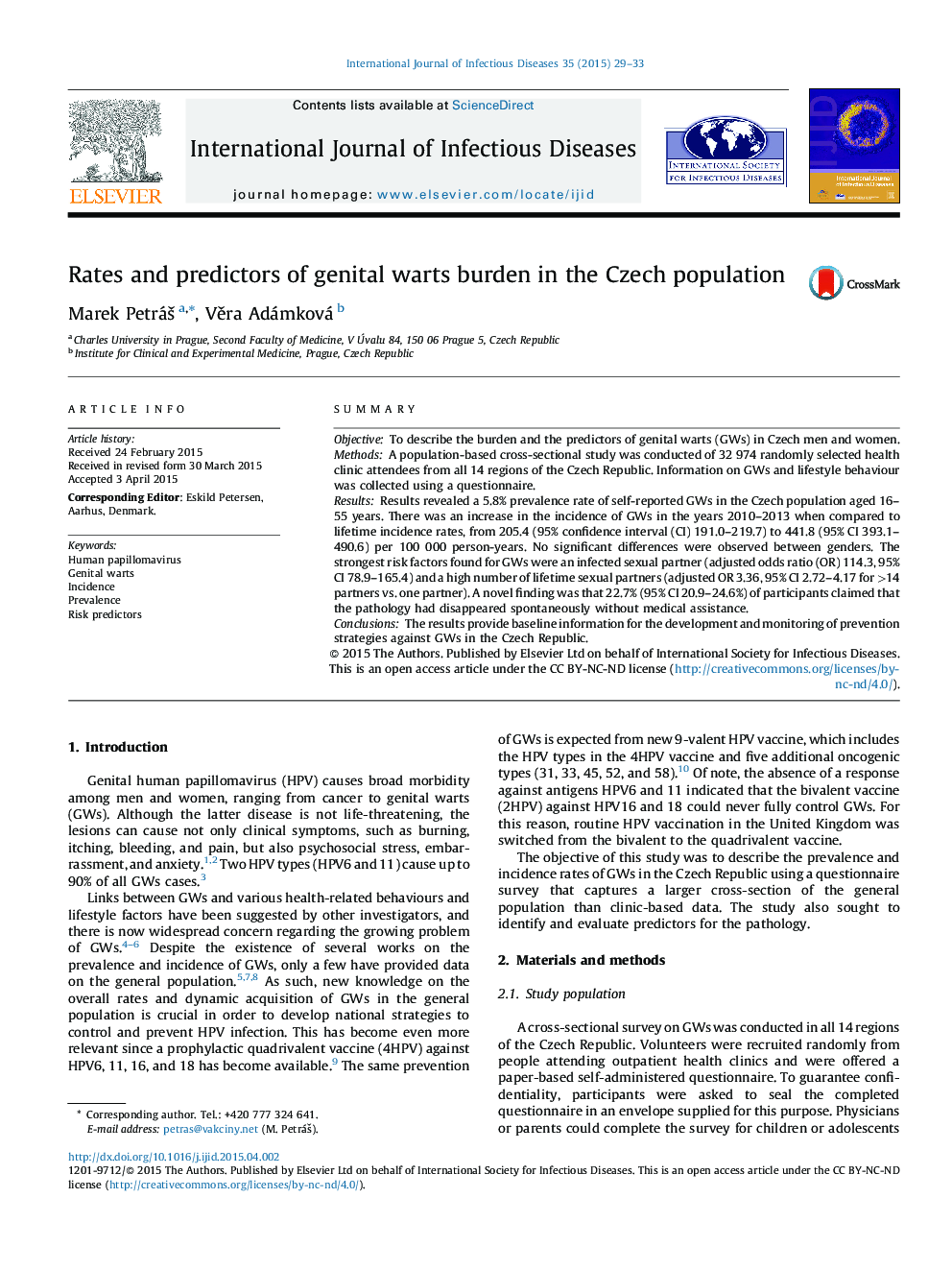| Article ID | Journal | Published Year | Pages | File Type |
|---|---|---|---|---|
| 3362075 | International Journal of Infectious Diseases | 2015 | 5 Pages |
•The prevalence rate of genital warts (GWs) in the Czech population aged 16–55 years was found to be 5.8%.•The incidence of GWs increased to 442 per 100 000 person-years in 2010–2013.•An infected sexual partner was the strongest risk factor for GWs acquisition.•Almost 23% of patients reported the spontaneous disappearance of GWs.•Immunization with the quadrivalent HPV vaccine was a protective factor reducing GWs acquisition by more than 90%.
SummaryObjectiveTo describe the burden and the predictors of genital warts (GWs) in Czech men and women.MethodsA population-based cross-sectional study was conducted of 32 974 randomly selected health clinic attendees from all 14 regions of the Czech Republic. Information on GWs and lifestyle behaviour was collected using a questionnaire.ResultsResults revealed a 5.8% prevalence rate of self-reported GWs in the Czech population aged 16–55 years. There was an increase in the incidence of GWs in the years 2010–2013 when compared to lifetime incidence rates, from 205.4 (95% confidence interval (CI) 191.0–219.7) to 441.8 (95% CI 393.1–490.6) per 100 000 person-years. No significant differences were observed between genders. The strongest risk factors found for GWs were an infected sexual partner (adjusted odds ratio (OR) 114.3, 95% CI 78.9–165.4) and a high number of lifetime sexual partners (adjusted OR 3.36, 95% CI 2.72–4.17 for >14 partners vs. one partner). A novel finding was that 22.7% (95% CI 20.9–24.6%) of participants claimed that the pathology had disappeared spontaneously without medical assistance.ConclusionsThe results provide baseline information for the development and monitoring of prevention strategies against GWs in the Czech Republic.
